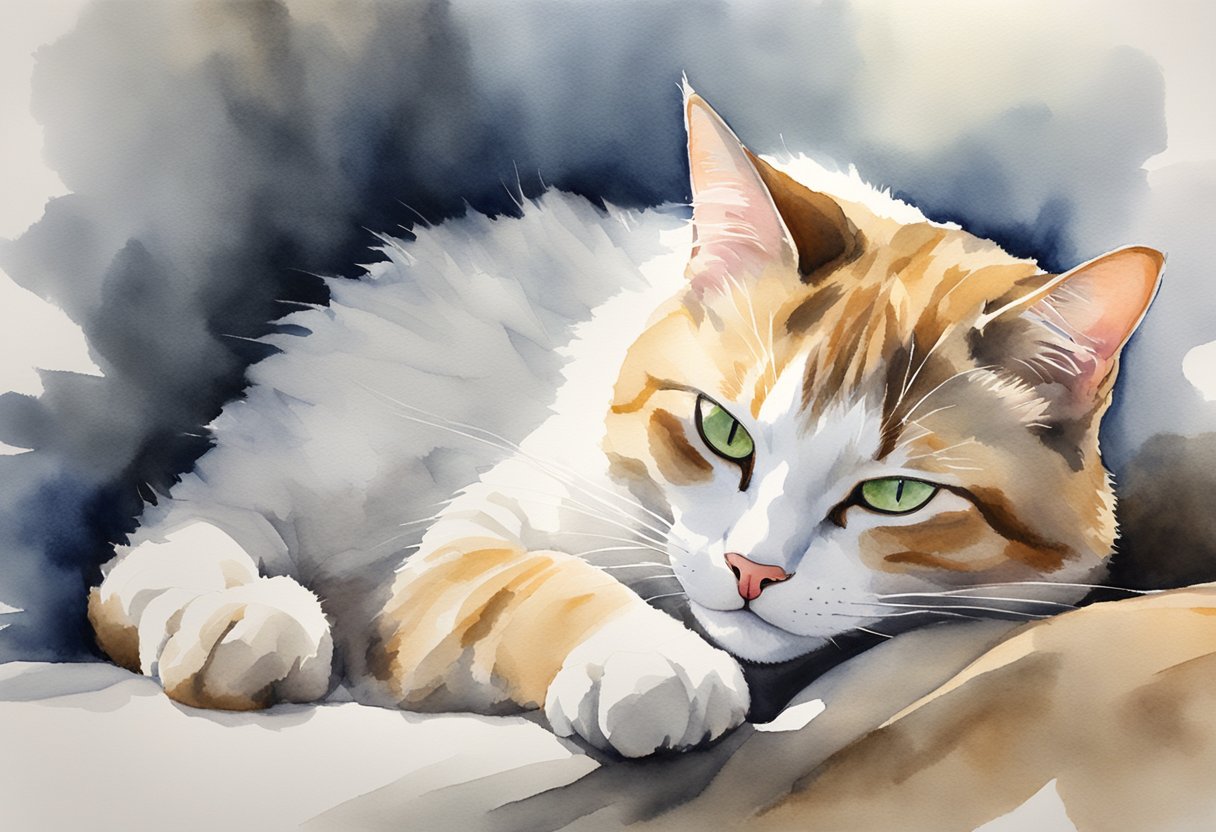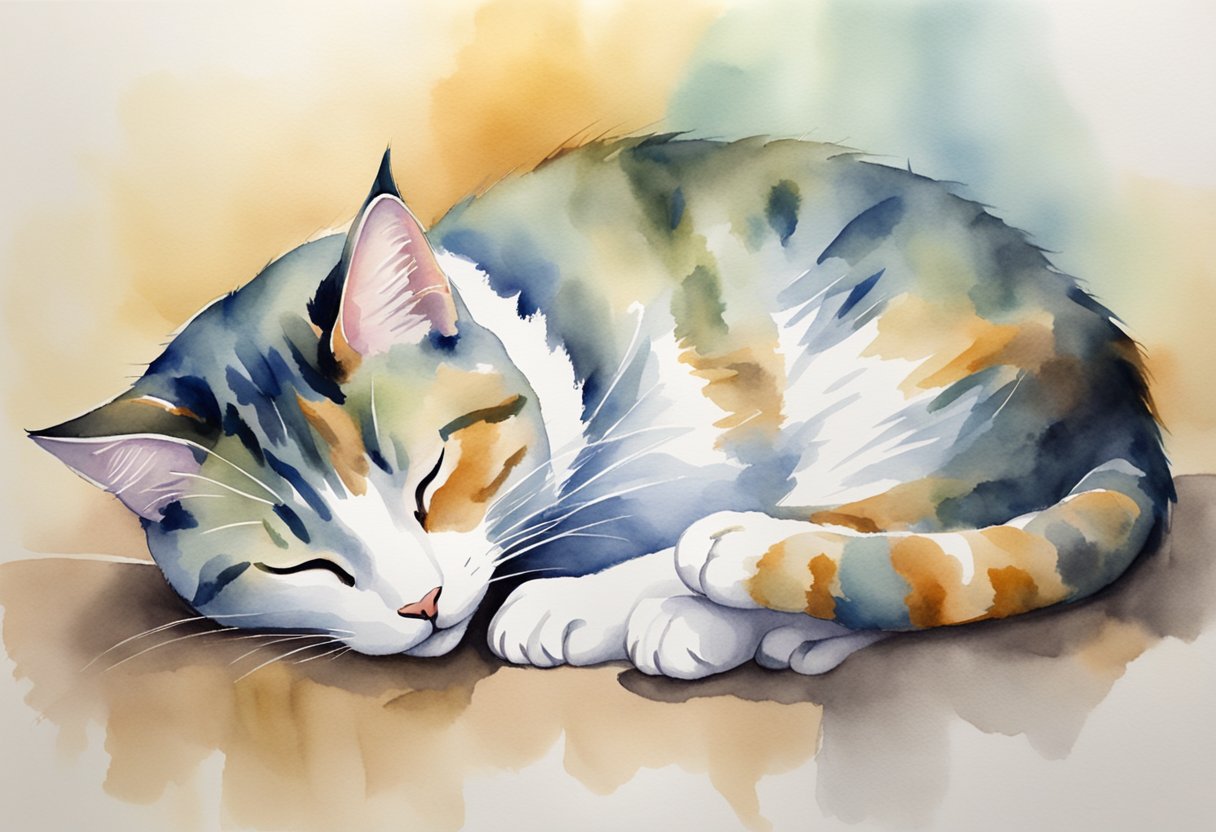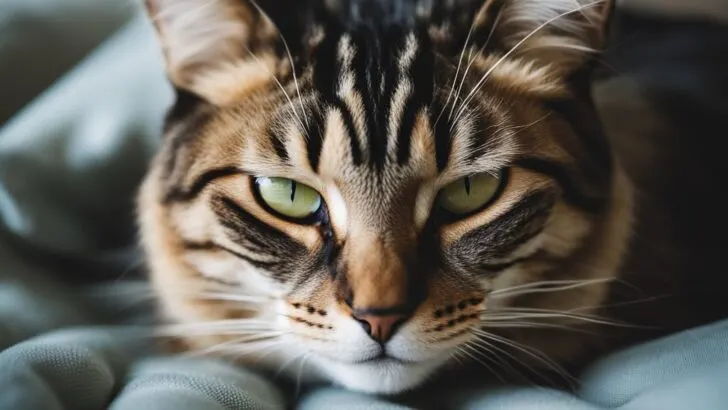Cats often sleep with their head up as a way to stay alert even while they’re resting. This position allows them to quickly spring into action if necessary, offering a clear survival advantage from their days in the wild.
For instance, if a sudden noise or movement occurs, a cat with its head up can respond much faster than if it were lying down fully relaxed. This is especially true for outdoor or feral cats, where the need to be constantly aware of predators or other hazards is crucial.

Indoor cats have retained this behavior, so you might notice your cat dozing off but still remaining somewhat attentive. It’s a position that balances comfort with the ability to leap up at a moment’s notice should their curiosity be piqued or their safety be threatened.
When you see your cat curled up in a sunbeam yet with their head raised, they’re enjoying the best of both worlds—deep rest while being ready for anything.
Moreover, this sleeping style is not indicative of any discomfort; it is simply a testament to your cat’s instinctual behavior. It’s as much a part of being a cat as their love for catnip or chasing laser dots. As you spend more time with cats, you’ll come to recognize this and many other quirky yet entirely normal feline behaviors.
Cat Sleep Behaviors

As a cat owner, you might find it fascinating that the way your cat sleeps can actually tell you a lot about their mood and health. Cats are known for their unique sleep habits, which often reflect their instincts and natural behaviors.
The Science of Sleep
Cats spend a significant portion of their day snoozing. This is because sleep is vital for conserving energy and keeping their predatory skills sharp. Unlike humans, cats experience a variable sleep cycle, flipping between light sleep and the deeper rapid-eye-movement (REM) sleep where they dream.
During light sleep, they stay alert to the slightest disturbances, which can provide insight into their evolutionary need to quickly respond to threats from predators or changing environments.
Head Up: A Position of Safety
When you see your cat sleeping with their head up, it’s a position that suggests they’re maintaining a level of alertness. Your cat is comfortable but still ready to spring into action at a moment’s notice.
This position can serve as a protective posture where vital organs are guarded, and escaping quickly if needed is an option. It’s a throwback to their wildcat ancestors, who always had to be cautious of potential dangers.
Common Sleeping Positions and Their Meanings
- The Loaf: With paws tucked under the body, this position retains body heat and is a sign of a relaxed yet alert cat.
- The Side-Sleeper: This position shows a cat that is feeling safe and comfortable in its environment.
- The Belly-Up: Exposing the vulnerable belly is a sign of ultimate trust in their surroundings — it’s also a great way to cool down.
- The Box Fit: Cats often seek out confined spaces for a sense of security and to maintain their body temperature.
In observing your cat’s sleeping habits, note that while some positions suggest normal, instinctual behavior, others could be indicative of health issues. Consistently sleeping with the head up might signal respiratory discomfort or other health problems.
If you notice any changes or peculiar sleep habits developing, keep an eye on their overall behavior and consult a veterinarian if necessary. A cat at ease generally switches between various sleeping positions, enjoyably drifting from dream to dream in the comfort of their trusted home environment.
Health Implications of Sleeping Positions
Sleeping behavior in cats can often give you clues about their health. Understanding what different positions indicate can help you gauge your cat’s well-being and decide when it might be time to consult a veterinarian.
Sleeping Positions as Health Indicators
When your cat chooses certain sleeping positions, they’re not just looking for comfort—they might be signaling their health status. A cat curled up in a ball could be attempting to preserve body heat due to feeling cold or unwell, whereas one sleeping sprawled out might be feeling overheated.
Persistent changes in sleeping posture or a cat that seems to favor one side may warrant a check for pain or discomfort, potentially linked to injuries or conditions like arthritis.
Difficulty breathing might lead a cat to sleep with its head propped up to allow for easier airflow, which could indicate respiratory problems. On the other hand, a cat sleeping with its head up may simply feel safe and protected but always remain ready to spring into action should the need arise.
Should I Worry That My Cat Sleeps With Their Head Up?
If you notice your cat often sleeps with their head up, it’s usually not a concern, especially if they can relax their muscles in this position. Cats’ neck muscles are quite robust, allowing them to adopt various sleeping postures comfortably.
However, if this behavior is new or accompanied by other signs of sickness—like lethargy, reduced appetite, or changes in behavior—it’s wise to consult a veterinarian. This position could offer clues about heart disease, lung congestion, or other underlying health issues that require treatment.

My name is James, and welcome to FAQCats!
Along with our team of cat owners, expert pet enthusiasts, and pet professionals, we aim to write engaging helpful, engaging content about cats. At FAQCats we strive to provide content that’s accurate and fun to read. Our team writes about everything related to cats; even the most complex of topics. Through extensive research and caring for our own fur-pals, we’re able to provide something cat owners worldwide will love. Have a look around, and leave us feedback anytime!

